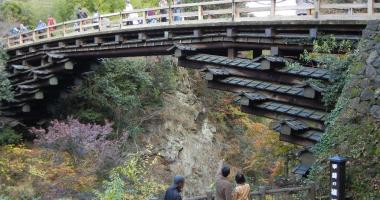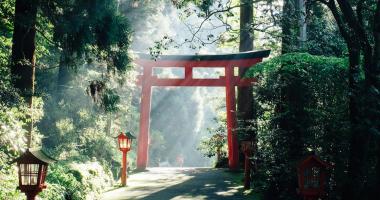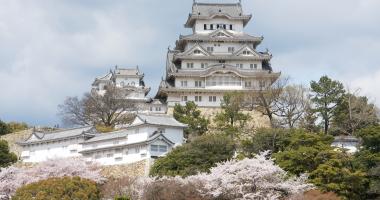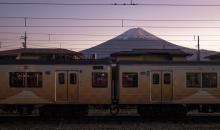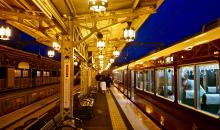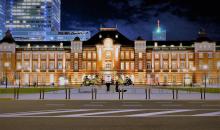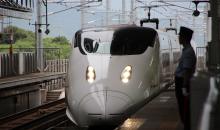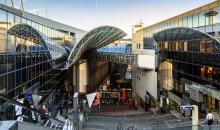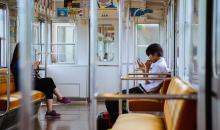How to get from Kyoto to Tokyo
Going from the former capital of Kyoto to the current capital of Tokyo can be like traveling through time. Much of Kyoto’s historic sites are preserved in the form of its traditional streets, districts, and 17 UNESCO heritage sites. Additionally, it’s a city with fairly strict height limits on its buildings, so transitioning to Tokyo, with its sprawl of tall skyscrapers and densely packed neighborhoods, can be jarring.
Going from Kyoto to Tokyo via Shinkansen bullet train
Shinagawa or Tokyo Station
As two major locations on Japan’s Golden Route, traversing between the two is a common journey that is made easily with the Tokaido-Sanyo Shinkansen that goes between Tokyo and Kyushu. This journey is typically around 2 to 2.5 hours and passes through places such as Aichi Prefecture and Kanagawa Prefecture. Passengers will leave from Kyoto Station and get off at Shinagawa Station or Tokyo Station for immediate access to inner-city Tokyo.
Shinkansen bullet train tickets can be purchased with or without a reservation to ride these trains. They are also covered by the Japan Rail Pass, though riding the Nozomi and Mizuho Shinkansen trains will entail an additional fee of 4,960 yen to benefit from the faster commuting times. Be sure to be familiar with reservation rules as well as rules for oversized baggage before riding the Shinkansen train between Kyoto and Tokyo.
Different Shinkansen available for this itinerary
| Nozomi Shinkansen Bullet Train | Mizuho Shinkansen Bullet Train | Hikari Shinkansen Bullet Train | Kodama Shinkansen Bullet Train |
*NOTE: All Shinkansen bullet trains on the Tokaido-Sanyo Line are accessible with the Japan Rail Pass; however, an additional fee of 4,960 yen is required to ride the Nozomi and Mizuho trains from Tokyo to Kyoto.
Reserve Shinkansen tickets from Kyoto to Tokyo!
Reserving Seats on the Shinkansen
Individual ticket holders and Japan Rail Pass subscribers can book seats in advance of boarding on Shinkansen trains. Shinkansen trains often feature non-reserved cars with seats available on a first-come, first-served basis, so reservations are not usually necessary. Usually, these are the car numbers 1–4.
However, reservations are needed for each car on some trains. All visitors are nevertheless highly encouraged to attempt to reserve tickets during Japan's biggest travel periods, which are the spring and the New Year's vacation. A reserved seat costs extra when purchasing a single ticket, but Japan Rail Pass holders are exempt from this additonal charge.
Oversized Baggage on the Shinkansen
For travelers with large baggage, there are certain requirements that must be met to bring it onto the bullet train. Per Japan Railway regulation, baggage that exceeds a sum of 160cm in dimension (L x W x H) must be placed in the designated oversized baggage section located in the back of the train car, and the owners of such baggage must reserve seats nearby this space. Note that any baggage that exceeds 250cm in total dimensions is not allowed on the Shinkansen at all.
Exceptions for these baggage rules include things like baby carriages, musical instruments in cases, and sports equipment (like bikes, snowboards, etc.) that are also in cases.
Exploring Kyoto
Kyoto, the historic capital of Japan, is a culturally vibrant city brimming with history and home to 17 distinct UNESCO Heritage Sites. It is situated in the Kansai region, a culturally varied area of Japan renowned for its unique destinations, and is frequently the next stop on the Japan Golden Route itinerary for visitors from Tokyo.
The temple itself and the ascent to Kyomizudera are two of Kyoto's most famous sights, and both are worthwhile excursions. Explore a little off the usual route; the hilly lanes leading up to the temple are lined with quaint stores and eateries! Then, Ginkakuji and Kinkakuji, the "gold and silver temples," serve as powerful symbols of the city's storied past. Kitaoji is a more modest neighborhood with a tranquil vibe, accented with a mix of old temples and even a local favorite onsen.
Kyoto is still a major city, but it's not like other large cities in Japan; it's surrounded by mountains on three sides and characterized by traditional architecture instead of tall skyscrapers.
Utilize Kyoto's distinctive topography by spending some time on a leisurely walk to take in the scenery. One of the easier hikes in the area leads to Chion-in Temple and takes around two hours from Shogunzuka to Seiryuden. Enjoy an unrestricted perspective of the city from a high vantage point and discover Kyoto in a way you never would have imagined.
When departing from Kyoto Station in the heart of the historic capital, tourists heading to Tokyo must do so. Not many towns in the world can match Kyoto's distinction of being the first city to commemorate its 1200th anniversary—a feat that was accomplished in 1997 when the station underwent its current design by renowned architect Hiroshi Hara. There are a few restaurants, cafes, and convenience stores within, although the space is not as big as Tokyo Station.
Nonetheless, the illuminated staircase—whose display varies with the season—is one of Kyoto Station's most identifiable features. Another short stroll from the station is the renowned Ume-yu, a quirky and distinctive sento bathouse that's a terrific place to pass the time and unwind.
Exploring Tokyo
Often the initial destination for those traversing Japan’s “Golden Route,” the nation’s capital of Tokyo has something for everyone, on account of it being the world’s largest city in terms of population. From exploring the light-filled night streets of Shinjuku to the slower, hip neighborhoods like Koenji and Gakugei Daigaku, there is adventure to discover at practically every train station within this urban metropolis.
And speaking of these train stations, Tokyo’s well-developed and far-reaching train network is perfect for getting to where you need to go and made only easier for holders of the Japan Rail Pass. Using major stations such as Shinjuku, Shibuya, Tokyo, or Ikebukuro Stations as a central hub, much of the city is widely accessible via the many train lines, from the ones operated by JR to the Subway Metro System. It’s easy to choose a train station you may be unfamiliar with and take the opportunity to discover a new neighborhood. There are charming cafes, stylish shops, and a medley of other attractions to go out and see.
For traveling foodies, Tokyo is an essential destination, home to an endless array of quality restaurants, from unassuming local shops to world-famous establishments.
Food options also come in the form of quick, easy, and affordable street food to luxurious and acclaimed high-end dining (and in fact, Tokyo is home to the most Michelin-starred establishments in the world). For the ultimate culinary experience, hip neighborhoods like Hatagaya and Setagaya are often visited for their lively sake and wine bars, and Higashi Azabu is home to a medley of acclaimed restaurants for the perfect night-time meal.
Arriving from Kyoto, passengers will usually get off the Shinkansen bullet train at either Shinagawa Station or Tokyo Station, both of which are major stops inside the central Tokyo metropolitan area. While Tokyo Station is a major commercial area with charming parks, great shopping, and upscale restaurants, Shinagawa is home to a number of offices and facilities that are directed towards workers at the surrounding companies. That being said, there are a number of spots to check out by Shinagawa Station, such as the Nikon Museum and Shinagawa Aquarium.

Shinkansen from Kyoto
@Wikimedia
From the ancient capital to the modern one
These two cities are said to strongly represent Japan as an essential travel destination, but in very different ways, making traveling between the two an essential part of your next Japan-travel itinerary. As one of the most popular train routes in the country, the Shinkansen train will be the best way to go between the two, especially for Japan Rail Pass users who can ride the Hikari or Kodama Shinkansen without any extra charge. But for those without a Japan Rail Pass, be sure to order your tickets with or without a reserved seat!





